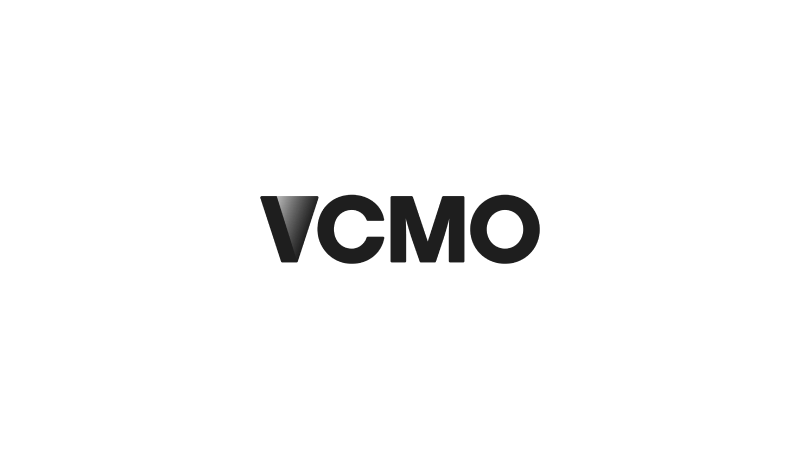Close capability gaps and unlock enterprise value through embedded marketing leadership.
Introduction – Why Marketing Teams Are a Leadership Priority
For many businesses, marketing teams are seen as tactical executors—responsible for delivering campaigns, managing content, and keeping the brand visible. Yet for CEOs, founders, and investors, this narrow view can be dangerous. The capability of a marketing team is not simply an operational concern; it is a strategic determinant of growth, competitiveness, and enterprise value. If a marketing function is underpowered or misaligned, it can quickly become a bottleneck that stifles commercial progress.
This is where the Fractional Chief Marketing Officer (CMO) plays a distinctive role. More than just an external advisor, a Fractional CMO embeds commercial discipline, strategic direction, and leadership development into the heart of your marketing function. Their goal is not only to deliver short-term improvements but also to elevate the team’s skills, mindset, and performance standards in a way that endures long after the engagement ends.
For leadership teams under pressure to scale, adapt, or deliver investor returns, the development of marketing capability is a board-level issue. In this article, we explore how a Fractional CMO can transform your marketing team into a high-performing growth engine—closing gaps, instilling resilience, and embedding the practices that protect and enhance enterprise value.
Diagnosing Capability Gaps – A CEO’s Lens
The first responsibility of a Fractional CMO is to establish an accurate picture of the marketing team’s current capability. For CEOs and investors, this diagnostic marketing audit is crucial: without it, there is a risk of allocating budget and resources to activities that lack the skills or structure to deliver meaningful outcomes. Too often, teams appear productive—running campaigns, producing content, managing channels—yet when measured against commercial outcomes, their efforts are fragmented, inefficient, or misaligned with strategy.
A Fractional CMO applies an objective lens, moving beyond surface-level outputs to assess performance against key growth drivers. This includes evaluating the breadth and depth of skills, identifying duplication or gaps across functions, and benchmarking performance against both internal targets and external competitors. Importantly, the assessment is not limited to hard skills. It extends to team collaboration, communication flows, and the ability to integrate marketing effectively with sales, product, and finance.
By surfacing these insights early, leadership gains clarity on whether the existing team is structured to deliver growth or whether fundamental redesign is needed. For CEOs, this evidence-based approach eliminates guesswork and provides a firm foundation for deciding where to invest, restructure, or recruit.
“The difference between a busy marketing team and an effective one is strategic alignment. A Fractional CMO brings the clarity to show where value is created—and where effort is being wasted.”
Designing the Right Team Structure for Growth
Once capability gaps have been diagnosed, the next step is to design a team structure that can deliver against the company’s growth objectives. Many businesses evolve their marketing function reactively—adding headcount to plug immediate gaps, often resulting in duplication, unclear responsibilities, and a lack of strategic direction. A Fractional CMO brings discipline to this process, defining the optimal structure required to support the business model, scale, and strategic ambitions.
This involves clarifying the division of responsibilities across brand, digital, content, performance, and analytics, ensuring that each role is purposeful and aligned to commercial outcomes. For early-stage companies, this might mean building a lean team supplemented by specialist agencies, while for scale-ups or PE-backed firms, it could involve developing an in-house capability that reduces dependency on external vendors. The Fractional CMO also ensures that reporting lines are clear and that marketing is positioned as a strategic partner to sales, product, and finance—not a siloed function.
By mapping the right structure and recruiting against it, CEOs and investors gain confidence that the marketing team is not just busy, but built to deliver measurable growth. The outcome is a function that is scalable, accountable, and aligned to enterprise priorities.
Embedding Skills and Raising the Standard
Even with the right structure in place, a marketing team can only deliver sustainable results if its people have the skills to match the strategic ambition. This is where a Fractional CMO shifts focus from design to development—closing capability gaps and embedding higher performance standards across the function.
A rigorous skills audit often reveals familiar challenges: strong creative talent but limited commercial acumen; proficiency in execution but weak analytical capability; or digital expertise without the ability to link activity back to revenue. A Fractional CMO addresses these imbalances through targeted training, mentoring, and exposure to best practice, ensuring the team develops into a well-rounded unit that can deliver across strategy, execution, and measurement.
Equally important is raising the standard of how marketing is managed. This includes embedding processes for campaign planning, pipeline management, and performance reporting—disciplines often missing in underdeveloped teams. By insisting on commercial rigour and accountability, the Fractional CMO sets a new baseline for what good looks like.
For CEOs, this investment in team capability provides dual benefits: it drives immediate improvements in performance and creates a stronger, more resilient function that can support future growth without constant reliance on external intervention.
“Upskilling is not just about new tools or training. It’s about changing the mindset of a team so every action is tied to commercial outcomes.”
Leadership, Mentorship, and Culture Shift
Marketing teams rarely fail because of a lack of activity—they fail because leadership, direction, and accountability are missing. A Fractional CMO addresses this gap by acting as both leader and mentor, providing the strategic clarity and professional example that teams often lack in the absence of senior guidance. Their role extends beyond task management: it is about shaping behaviours, setting expectations, and instilling a culture where performance is measured by contribution to business outcomes, not just activity levels.
Through mentoring, team members gain exposure to the commercial mindset required to succeed in board-level discussions. Junior staff learn how to link their work to revenue, customer value, and market positioning. Mid-level managers receive coaching in leadership and decision-making, preparing them for future senior roles. This emphasis on knowledge transfer ensures that when the Fractional CMO steps away, the capability remains embedded within the organisation.
Culturally, the shift can be profound. Instead of a reactive, campaign-driven approach, the marketing team begins to operate as a strategic partner—confident, accountable, and aligned to enterprise priorities. For CEOs and investors, this change represents more than improved execution; it is the creation of a marketing function that adds long-term enterprise value.
Measuring Success – KPIs That Matter to CEOs and Investors
For marketing to be treated as a board-level growth driver, its success must be measured against metrics that resonate with CEOs and investors. A Fractional CMO introduces rigour by defining and tracking KPIs that link marketing activity directly to commercial outcomes. This approach shifts the conversation away from vanity metrics such as impressions or likes, towards indicators that demonstrate genuine impact on revenue and enterprise value.
Key measures often include pipeline contribution, customer acquisition cost (CAC), conversion rates, sales cycle velocity, and customer lifetime value (CLV). At the same time, operational efficiency—such as campaign ROI, budget adherence, and team productivity—provides insight into how effectively resources are being deployed. By creating transparent reporting frameworks, the Fractional CMO ensures that marketing performance can be evaluated with the same level of scrutiny as sales, finance, or operations.
For leadership, this clarity is transformative. Instead of debating the subjective effectiveness of campaigns, boards can see the hard data that proves whether marketing is fuelling growth or draining resources. This accountability not only builds trust in the marketing function but also gives CEOs and investors the confidence to scale investment when they see marketing delivering measurable returns.
“When marketing is measured in terms CEOs and investors care about—pipeline, revenue, and efficiency—it earns its rightful place as a driver of enterprise value.”
Conclusion – Building a Team That Outlasts the Fractional CMO
The true value of a Fractional CMO is not measured solely in the immediate improvements they deliver, but in the resilience and capability they leave behind. By diagnosing gaps, redesigning structure, embedding new skills, and mentoring future leaders, they create a marketing function that can thrive long after their engagement concludes. This focus on knowledge transfer ensures the organisation is not dependent on external intervention but instead builds internal strength that compounds over time.
For CEOs, founders, and investors, this represents more than operational uplift—it is a form of strategic insurance. A high-performing marketing team protects enterprise value, accelerates revenue growth, and reduces the risks of stalled performance when leadership transitions occur. It also signals to stakeholders and employees alike that marketing is not a tactical afterthought but a core driver of business success.
Bringing in a Fractional CMO should therefore be seen as a strategic investment in people and process, not a stopgap. Done well, their legacy is a marketing team that is sharper, more confident, and better aligned with commercial priorities. In a competitive market environment, that capability is one of the most powerful assets a business can possess.
About VCMO
VCMO is a UK-based provider of fractional marketing services, supporting B2B SMEs—ranging from funded scale-ups to mid-tier and private equity-backed businesses—through key moments of growth and transformation. Its Chartered Fractional CMOs and SOSTAC® certified planners embed strategic marketing leadership into organisations navigating product launches, new market entry, acquisitions, and leadership gaps.
What’s a Rich Text element?
The rich text element allows you to create and format headings, paragraphs, blockquotes, images, and video all in one place instead of having to add and format them individually. Just double-click and easily create content.
- By following these tips, you can make sure you’re noticed on LinkedIn and start building the professional connections you need to further your career.
-

Static and dynamic content editing
A rich text element can be used with static or dynamic content. For static content, just drop it into any page and begin editing. For dynamic content, add a rich text field to any collection and then connect a rich text element to that field in the settings panel. Voila!
How to customize formatting for each rich text
Headings, paragraphs, blockquotes, figures, images, and figure captions can all be styled after a class is added to the rich text element using the "When inside of" nested selector system.


Ready to take your marketing to the next level? Let us help you get there.
Subscribe to Our Newsletter
Fractional Edge is our montly newsletter sharing expert opinion on the latest trends in fractional leadership, curated marketing content from leading sources, VCMO events, and much more. Subscribing is quick — just add your name and email.











.jpg)





